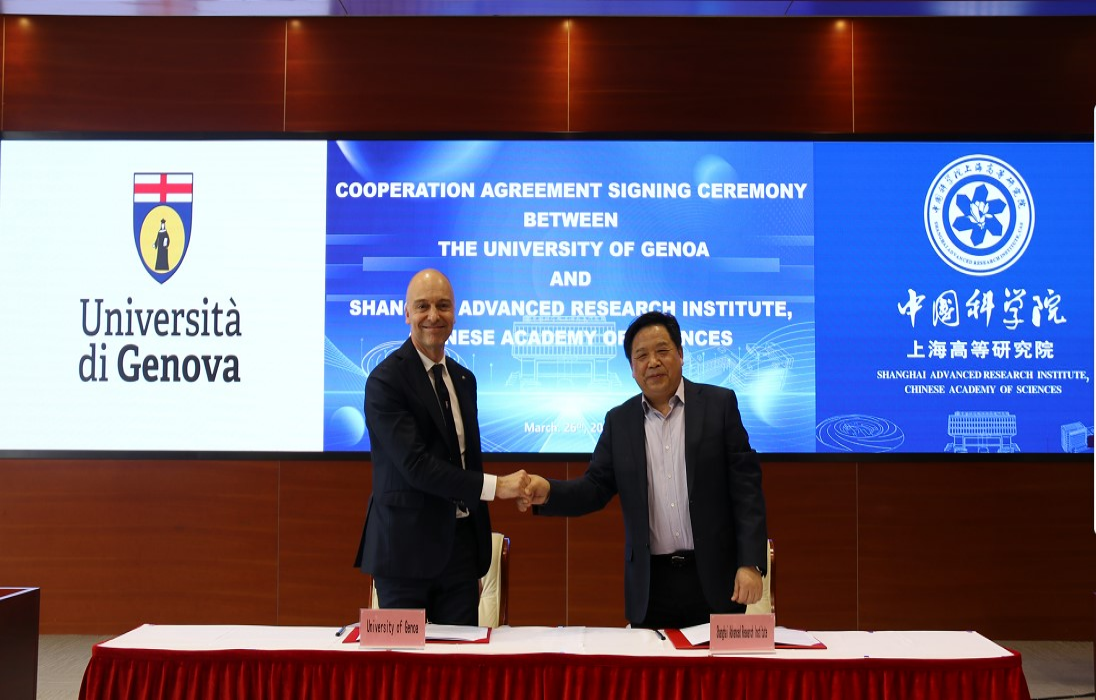On November 5, Prof. Giorgio Parisi, the 2021 Nobel Laureate in Physics and Professor at Sapienza University of Rome, delivered an insightful and engaging lecture for the 3rd “SARI Lecture”, titled “In a Flight of Starlings: Amazing Science”. He shared his inspirational stories and insights on the intersections of complex systems in his talk and attracted more than 200 attendees.The event started with a welcome address from President of SARI Prof. Huang Zhengren, who extend his warmest welcome and sincerest gratitude to Prof. Parisi on behalf of SARI, followed by the Awarding Ceremony of the Distinguished Scientist of Chinese Academy of Sciences for Prof. Parisi.Prof. Parisi started the talk with reviewing his research background of elementary particles and quantum field theory to statistical physics, condensed matter and complex systems. He noted that cross-disciplinary research can stimulate one’s potential to make important discoveries.He introduced his team’s work on investigating the principles of physics by observing the flight of flocks of birds. Studying the movements of these communities, he realized and proved an illuminating way into understanding complex systems of all kinds—collections of everything from atoms and planets to other animals. Prof. Parisi particularly emphasized the crucial roles of disorder and randomness in complex systems, explaining that “the response to a strong external perturbation is strongly affected by inhomogeneities. The weakest link in the chain determines the strength of the chain.”He noted that the study of complex systems is very interesting and also provides an important reference for the hot topic of artificial intelligence.Prof. Parisi also discussed the importance of interdisciplinary research in the in pursuit of scientific truth: the importance of serendipity to the discovery of new ideas, the surprising kinship between physics and other disciplines, and the value of science to a thriving society. He expressed hope that young researchers could contribute further theoretical insights and innovation to interdisciplinary research.During the Q&A session, the audience engaged with Prof.r Parisi actively on topics ranging from research methods in complex systems to the future of AI.The lecture not only delivered frontier scientific knowledge, but also inspired deep interest and reflection on complexity and interdisciplinary research among audience.President Huang Zhengren, Academician of Chinese Academy of Engineering Prof. Zhao Zhengtang, Vice President Tai Renzhong attended the event and held talks with Prof. Parisi. <!--!doctype-->On November 5, Prof. Giorgio Parisi, the 2021 Nobel Laureate in Physics and Professor at Sapienza University of Rome, delivered an insightful and engaging lecture for the 3rd “SARI Lecture”, titled “In a Flight of Starlings: Amazing Science”. He shared his inspirational stories and insights on the intersections of complex systems in his talk and attracted more than 200 attendees.The event started with a welcome address from President of SARI Prof. Huang Zhengren, who extend his warmest welcome and sincerest gratitude to Prof. Parisi on behalf of SARI, followed by the Awarding Ceremony of the Distinguished Scientist of Chinese Academy of Sciences for Prof. Parisi.Prof. Parisi started the talk with reviewing his research background of elementary particles and quantum field theory to statistical physics, condensed matter and complex systems. He noted that cross-disciplinary research can stimulate one’s potential to make important discoveries.He introduced his team’s work on investigating the principles of physics by observing the flight of flocks of birds. Studying the movements of these communities, he realized and proved an illuminating way into understanding complex systems of all kinds—collections of everything from atoms and planets to other animals. Prof. Parisi particularly emphasized the crucial roles of disorder and randomness in complex systems, explaining that “the response to a strong external perturbation is strongly affected by inhomogeneities. The weakest link in the chain determines the strength of the chain.”He noted that the study of complex systems is very interesting and also provides an important reference for the hot topic of artificial intelligence.Prof. Parisi also discussed the importance of interdisciplinary research in the in pursuit of scientific truth: the importance of serendipity to the discovery of new ideas, the surprising kinship between physics and other disciplines, and the value of science to a thriving society. He expressed hope that young researchers could contribute further theoretical insights and innovation to interdisciplinary research.During the Q&A session, the audience engaged with Prof.r Parisi actively on topics ranging from research methods in complex systems to the future of AI.The lecture not only delivered frontier scientific knowledge, but also inspired deep interest and reflection on complexity and interdisciplinary research among audience.President Huang Zhengren, Academician of Chinese Academy of Engineering Prof. Zhao Zhengtang, Vice President Tai Renzhong attended the event and held talks with Prof. Parisi. <!--!doctype-->

